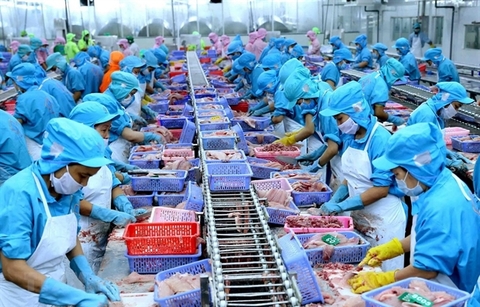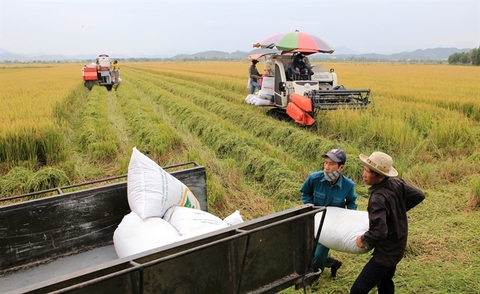Seafood exports pick up but challenges continue
Seafood exports pick up but challenges continue
While seafood exports increased slightly in July, Viet Nam continues to face challenges, experts told a conference held by the Viet Nam Association for Seafood Exporters and Producers in HCM City on August 28.

Exports in the first seven months were worth US$4.7 billion, down 0.2 per cent from a year earlier, but 9 per cent up month-on-month in July.
While exports of tuna and crustaceans such as crab and sentinel crab remained strong, rising by 20.3 per cent and 22.7 per cent year-on-year, main export items such as shrimp and shark catfish, which account for 60 per cent of total exports, were down from last year.
Shrimp, which accounts for nearly 38 per cent of exports, recovered in July after a weak performance since the beginning of the year.
Exports to Japan increased by 11.3 per cent year-on-year, and other markets apart from the EU and Korea too saw increases.
Shipments to China were up dramatically in July.
Truong Dinh Hoe, general secretary of VASEP, said while one of Viet Nam's strengths is aquaculture, it still has to import large volumes of raw seafood for processing and exporting, leading to higher prices and lower competitiveness.
It imported $1.7 billion worth of seafood last year.
Hoe said this is due to many reasons like diseases and climate change affecting supply, inconsistent quality and unstable markets.
He also warned that other countries are becoming more and more successful in farming shark catfish and shrimp, and Viet Nam is thus set to face tougher competition.
With shrimp and shark catfish exports forecast to fall by 3 - 4 per cent this year, VASEP plans to offer more assistance to businesses by pushing for more favourable policies, helping them overcome technical barriers, trade facilitation, and promotion of Vietnamese seafood.
It urged businesses to adopt modern technologies in aquaculture and focus on traceability of products and sustainable development.
Last year's seafood exports were worth nearly $9 billion, a 6 percent increase from 2017 as against a target of 10 per cent.
The target for this year is $10 billion.















